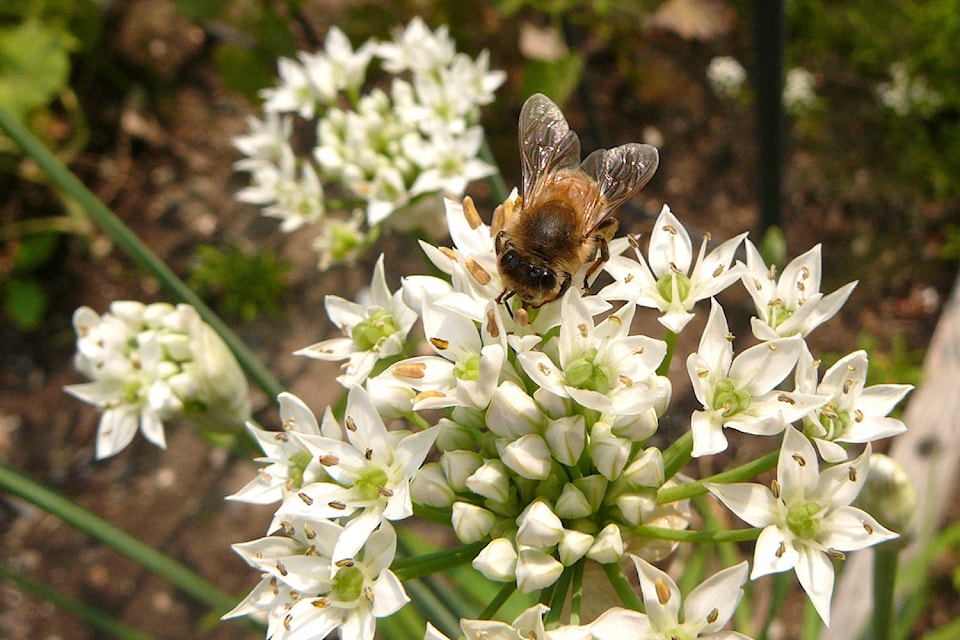Several versatile herbs commonly grown in our food gardens are decorative enough for the flower border and are also drought-tolerant.
Some have survived the tough conditions in my sunny xeriscape garden: dry, nutrient-poor sandy soil plus tree roots that compete with plants for any rainfall.
Thyme (Thymus vulgaris) has thrived there for years. I used its seedlings to fill in a challenging slope down to the street. They flourish even though the plough dumps gritty snow on them every winter.
There are also variegated-leaf forms such as silver thyme (T. 91ÂãÁÄÊÓƵ˜Argenteus91ÂãÁÄÊÓƵ™) and Doone Valley thyme. Not classed as edible herbs, creeping thymes are excellent in my garden. Wooly thyme is a fairly rapid growing ground cover.
Elfin thyme, dense, and a slower-growing ground cover works well between flagstones, as does mother-of-thyme. All these thymes are evergreen. Another herb that self-seeded and has been useful along the street is hyssop (Hyssopus officinalis). It91ÂãÁÄÊÓƵ™s blooming now with white, pink, or blue flowers.
Sage (Salvia officionalis) also does very well. Variegated-leaf forms of grey and purple (S. 91ÂãÁÄÊÓƵ˜Purparescens91ÂãÁÄÊÓƵ™), purple, pink, cream and green (S. 91ÂãÁÄÊÓƵ˜Tricolor91ÂãÁÄÊÓƵ™) and green and gold (S. 91ÂãÁÄÊÓƵ˜Icterina91ÂãÁÄÊÓƵ™), add light and interest to the garden all season.
Blue flowers are a bonus at the end of June.
Fatter-leaved than common chives, garlic chives (Allium tuberosum) have a garlic flavour. Their beautiful flat heads of white flowers open late in summer.
As with many herbal plants these are a favourite with pollinators. Oregano, another excellent pollinator plant, is slower to spread in a dry garden. Although I have never planted it in the dry garden, dill frequently appears there and does well until harvested for potato salads.
Many lavender plants do well and add a year-round silvery presence.
Self-seeding annual calendulas add a bright spot of yellow and orange. Flower petals brighten up salads. French tarragon also grows well.
Other plants classed as herbs, but not necessarily edible, also thrive in my dry garden. Catnip blooms from April to July and if cut back, blooms again.
Nepeta 91ÂãÁÄÊÓƵ˜Walker91ÂãÁÄÊÓƵ™s Low91ÂãÁÄÊÓƵ™ is a large form 30 inches high and wide. Santolina, sometimes called lavender cotton, is a sub-shrub with a shape similar to lavender. It has striking, silver foliage year round, and button, yellow flowers in early summer. Foliage can be used as a moth repellent.
In early summer Rue (Ruta graveolens) has flat clusters of tiny yellow flowers atop its finely cut, attractive blue-green foliage. It may be a cat deterrent. These herbs not only thrive without supplemental water, their aromatic foliage ensures that they are deer-proof.
Although not hardy in our climate, rosemary and bay are excellent drought tolerant herbs. To winter them over, put them in a pot in a south facing window and water weekly.
There will be a free presentation Wednesday, Aug. 23 at 7 p.m. in the unH2O Xeriscape Garden, 4075 Gordon Drive.
Gwen Steele is executive-director of the non-profit Okanagan Xeriscape Association. Learn more about Gardening with Nature and plants for the Okanagan on the website at



